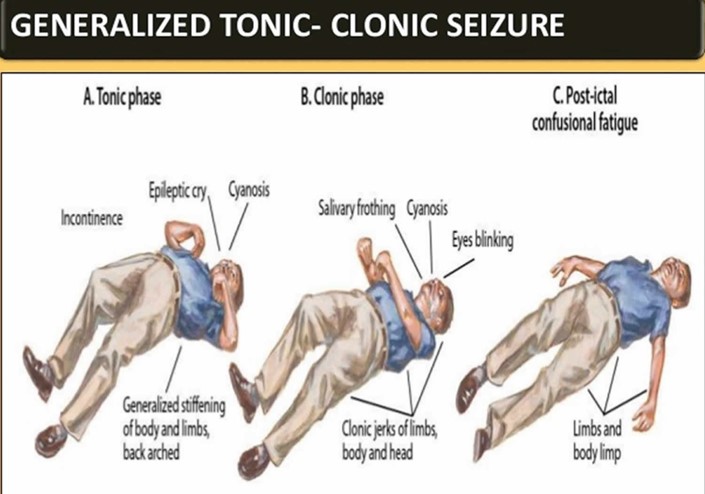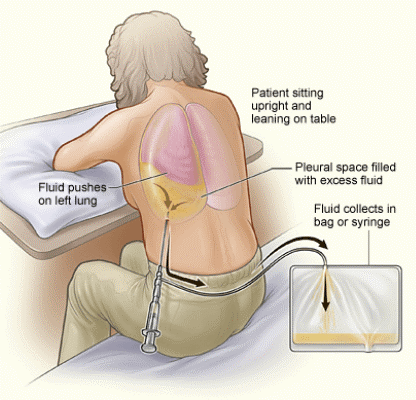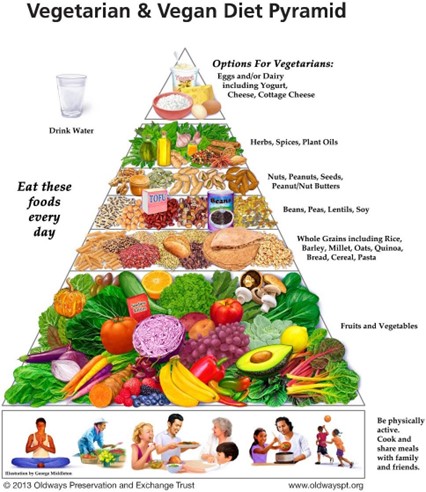RN > Exit Exams
Exam Review
HESI RN Exit 2023 II
Total Questions : 150
Showing 10 questions, Sign in for moreA 16-year-old client is asking the practical nurse (PN) what can be done about acne. Which recommendation should the PN provide?
Explanation
The correct answer and explanation is
-
Refer to the dermatologist for prescribed long-term therapy.
Explanation: Acne is a common skin condition that often requires professional evaluation and treatment by a dermatologist. While the other options may be part of a comprehensive acne management plan, they alone may not be sufficient to address the client's specific needs. The recommendation to refer the client to a dermatologist allows for a more comprehensive assessment and the implementation of appropriate long-term therapy tailored to the individual's condition. The dermatologist can prescribe medications, provide personalized skincare recommendations, and monitor the client's progress over time. This ensures that the client receives the most effective and appropriate treatment for their acne.
-
Wash the hair and skin daily with mild soap and warm water.
This option focuses on general skincare practices, which can be helpful in maintaining overall skin health. However, it does not address the specific treatment of acne. Acne is a complex condition influenced by factors such as hormones, genetics, and bacteria. While proper hygiene is important, it alone is unlikely to resolve acne or provide effective treatment.
-
Express blackheads and follow with an exfoliating scrub.
Atempting to manually express blackheads and using exfoliating scrubs can potentially worsen acne and lead to skin irritation. Squeezing or picking at acne lesions can cause inflammation and increase the risk of scarring. Exfoliating scrubs can also be too harsh for acne-prone skin and may aggravate the condition. It is generally recommended to avoid atempting to extract blackheads at home and to seek professional guidance from a dermatologist.
-
Omit chocolate, carbonated drinks, and fried foods from the diet.
While diet can play a role in overall skin health, there is limited scientific evidence linking specific foods to acne. The relationship between diet and acne is complex and can vary among individuals. While some people may notice improvements in their acne by avoiding certain foods, this approach may not be effective for everyone. It is important to note that acne is a multifactorial condition, and professional evaluation and treatment are necessary to address the underlying causes and determine the most appropriate management plan.
In summary, while general skincare practices and dietary modifications can contribute to overall skin health, they alone are unlikely to effectively treat acne. Referring the client to a dermatologist for prescribed long-term therapy ensures that they receive specialized care and appropriate treatment tailored to their specific condition.
The practical nurse (PN) observes an unlicensed assistive personnel (UAP) bathing a bedfast client with the bed in the high position. Which action should the PN take?
Explanation
This is the best action for the PN to take because it ensures the client's safety and prevents potential falls or injuries. The PN should also educate the UAP on the importance of lowering the bed when providing care to a bedfast client.
The practical nurse (PN) is caring for a child who was admited after experiencing a generalized tonic-clonic seizure. When witnessing the child begin the seizure, what should the PN implement immediately? (Select all that apply)
Explanation
The correct answers are:
a) Observe the progression of the seizure.
- Pad the side rails with pillows.
- Loosen clothing around the neck.
Explanation: During a generalized tonic-clonic seizure, it is important for the practical nurse (PN) to prioritize the safety and well-being of the child. The correct actions to implement immediately are:
a) Observe the progression of the seizure: The PN should closely observe the seizure to gather important information that can be helpful for medical professionals in assessing the seizure's characteristics and duration.
- Pad the side rails with pillows: Padding the side rails of the bed with pillows helps to prevent the child
from injuring themselves by hitting the side rails during the seizure.
- Loosen clothing around the neck: Loosening any tight clothing around the child's neck helps to ensure adequate breathing and prevent any constriction or discomfort during the seizure.
- Hold the extremities close to the body: This action is not recommended during a seizure as it may increase the risk of injury to the child or the PN.
- Insert a tongue blade between the teeth: It is not recommended to insert any object, including a tongue blade, between the teeth of a person experiencing a seizure. This can cause injury to the person's mouth or teeth and is no longer considered an appropriate intervention for seizures.

The patient is being assisted to the bathroom for the first time. The recent experience caused a sudden guard and ended up at the hospital. The options for the practical course (PN) are:
Explanation
b) Return the patient to bed and maintain bed rest until the local flow stabilizes.
Explanation: The patient experienced a sudden guard while being assisted to the bathroom, which led to their hospitalization. The most appropriate action for the practical nurse (PN) in this situation is to prioritize the patient's safety and well-being. Returning the patient to bed and maintaining bed rest allows for stability and minimizes the risk of further complications or injury. By providing a safe and controlled environment, the PN can monitor the patient's condition and collaborate with the healthcare team to determine the appropriate course of action moving forward. Options a), c), and d) are not relevant or appropriate in this context.
a) Maximize funding and avoid undue pressure on the cesarean incision: This option is unrelated to the situation described. It mentions maximizing funding, which is not relevant to the patient's condition, and does not address the sudden guard experienced during bathroom assistance.
b) Adjust fluid consistency and continue to monitor the local flow amount: This option is not applicable to the situation described. It suggests adjusting fluid consistency and monitoring local flow, which do not address the sudden guard experienced by the patient.
c) Withhold bladder emptying until the Foley catheter is removed and contract the fundus: This option is not appropriate for the situation described. It refers to withholding bladder emptying until the Foley catheter is removed, which may not be necessary or relevant in this case. Contracting the fundus is also unrelated to the sudden guard experienced during bathroom assistance.
After completing post anesthesia recovery assessments, the registered nurse (RN) asks the practical nurse (PN) to transfer four clients, each two hours post-birth, to the postpartum unit. Which client should the PN ask the RN to reassess prior to transfer?
No explanation
The practical nurse (PN) is completing a focused assessment on a client who is prescribed oxygen at 3 liters per minute by nasal cannula. Which assessment finding by the PN requires immediate action?
Explanation
A. This finding requires immediate action, as it indicates that the client is not receiving the prescribed amount of oxygen, which can compromise the oxygenation and perfusion of the tissues. The PN should adjust the flowmeter to deliver 3 liters per minute of oxygen, and check for any leaks or kinks in the tubing.
The other options are not correct because:
B. The absence of a humidifier does not require immediate action, as it is not a critical component of the oxygen delivery system. A humidifier can help moisten the dry oxygen and prevent mucosal irritation, but it is not essential for oxygenation.
CThe supine position does not require immediate action, as it is not a contraindication for oxygen therapy. The client may prefer this position for comfort or rest, and it does not affect the oxygen delivery or uptake.
D . The snug fit of the cannula does not require immediate action, as it is not a problem for oxygen therapy. The cannula should fit snugly against the client's cheeks to prevent dislodgment or slippage, and it does not interfere with the oxygen flow or diffusion.
Which action should the practical nurse (PNA) prioritize for postoperative patient with a PCA (Patient- Controlled Analgesia) machine?
Explanation
c) Assessing pain management response.
This is the correct answer because it is the most important and relevant action that the PN should do for a postoperative patient with a PCA machine. A PCA machine is a computerized device that allows the patient to self-administer a preset dose of pain medication, usually an opioid, by pressing a buton. The PCA machine is atached to an intravenous (IV) line that delivers the medication directly into the bloodstream. The PCA machine can provide effective and individualized pain relief for postoperative patients, as well as increase their sense of control and satisfaction¹².
The PN should assess the pain management response of the postoperative patient with a PCA machine by monitoring their pain level, vital signs, oxygen saturation, sedation level, and side effects. The PN should use a valid and reliable pain scale, such as the numeric rating scale (NRS) or the visual analog scale (VAS), to measure the patient's pain intensity and relief. The PN should also check the settings and functioning of the PCA machine, such as the dose, lockout interval, and limit. The PN should document and report the patient's pain management response and any problems or complications with the PCA machine to the health care provider.
a) Coffee ground secretions drainage via nasogastric tube.
This is not the correct answer because it is not a priority action that the PN should do for a postoperative patient with a PCA machine. Coffee ground secretions are dark brown or black granular material that are drained from the stomach via a nasogastric tube. They indicate bleeding in the upper gastrointestinal tract, such as from an ulcer, gastritis, or esophageal varices. Coffee ground secretions are a serious sign that require immediate atention and treatment³. However, they are not directly related to the use of a PCA machine or postoperative pain management. The PN should monitor the nasogastric tube drainage of the postoperative patient and report any coffee ground secretions to the health care provider, but this is not a priority action for a patient with a PCA machine.
b) Nasogastric tube suctioning.
This is not the correct answer because it is not a priority action that the PN should do for a postoperative patient with a PCA machine. Nasogastric tube suctioning is a procedure that involves applying negative pressure to a nasogastric tube to remove gastric contents from the stomach. It can be used to decompress the stomach, prevent vomiting or aspiration, or treat gastrointestinal bleeding or obstruction⁴. However, it is not directly related to the use of a PCA machine or postoperative pain management. The PN should perform nasogastric tube suctioning as ordered by the health care provider and according to protocol, but this is not a priority action for a patient with a PCA machine.
d) Ineffective pain management report.
This is not the correct answer because it is not an action that the PN should do for a postoperative patient with a PCA machine. Ineffective pain management report is an outcome or evaluation that indicates that the patient's pain is not adequately controlled or relieved by the current treatment plan. It may be caused by various factors, such as inadequate dosing, inappropriate medication choice, poor adherence, tolerance, or side effects⁵. However, it is not an action that the PN can implement or perform for a postoperative patient with a PCA machine. The PN should assess and document the patient's pain management response and report any ineffective pain management to the health care provider, but this is not an action for a patient with a PCA machine.
Which statement by a mature adult client with advanced prostate cancer best indicates that he has reached a level of acceptance of his prognosis?
No explanation
Ancient is scheduled for a thoracentesis that will be done at the bedside. What should the practical nurse (PN) prepare before the healthcare provider arrives to perform the procedure?
Explanation
Ancient is scheduled for a thoracentesis that will be done at the bedside. What should the practical nurse (PN) prepare before the healthcare provider arrives to perform the procedure?
- Gather the procedure tray and equipment.
- Cleanse the site and cover with a sterile towel.
- Keep the patient NPO (nothing by mouth) and encourage them to void.
- Place the patient in an orthopneic position.
The correct answer and explanation is:
- Cleanse the site and cover with a sterile towel.
Explanation: Before a thoracentesis, the practical nurse (PN) should prepare the patient by cleansing the site where the procedure will be performed and covering it with a sterile towel. This helps maintain a sterile field and reduces the risk of infection during the procedure.
Option A) Gathering the procedure tray and equipment is a task that is typically done by the healthcare provider or the medical assistant. The PN may assist in this process but it is not the first step they need to take.
Option C) Keeping the patient NPO (nothing by mouth) and encouraging them to void is not necessary for a thoracentesis procedure. NPO status is usually required for procedures that involve sedation or anesthesia, but a thoracentesis is typically performed with local anesthesia.
Option D) Placing the patient in an orthopneic position (sitting up and leaning forward) is not required for a thoracentesis. The position of the patient during the procedure may vary depending on the specific case and the preference of the healthcare provider.

The healthcare provider gives a pregnant woman a prescription for one prenatal vitamin with iron daily and tells her to increase iron-rich foods in her diet because her hemoglobin is 8.2 g/dL or (5.09 mmol/L).
When a list of iron-rich foods is given to the client, she tells the practical nurse (PN) that she is vegetarian and does not eat anything that "bleeds." Which instruction should the PN provide? (Select all that apply.)
Explanation
Since the pregnant woman is vegetarian and does not eat meat, the practical nurse (PN) should provide alternative sources of iron-rich foods. Lentils and black beans are excellent vegetarian sources of iron and can be added to soups to increase iron intake (option a).
Oatmeal is a good choice for breakfast as it is often fortified with iron (option d). This can help supplement
iron intake in the diet.
Green leafy vegetables, such as spinach, kale, and broccoli, are also rich in iron and should be increased in the client's diet (option e).
Option b, which suggests eating red meat just until the anemia is resolved, is not appropriate for a vegetarian client.
Option c, taking two prenatal vitamins with iron daily, is not necessary unless specifically advised by the healthcare provider. It is important to follow the prescribed dosage of medication and supplements as directed by the healthcare provider.
 |
Sign Up or Login to view all the 150 Questions on this Exam
Join over 100,000+ nursing students using Nursingprepexams’s science-backend flashcards, practice tests and expert solutions to improve their grades and reach their goals.
Sign Up Now

